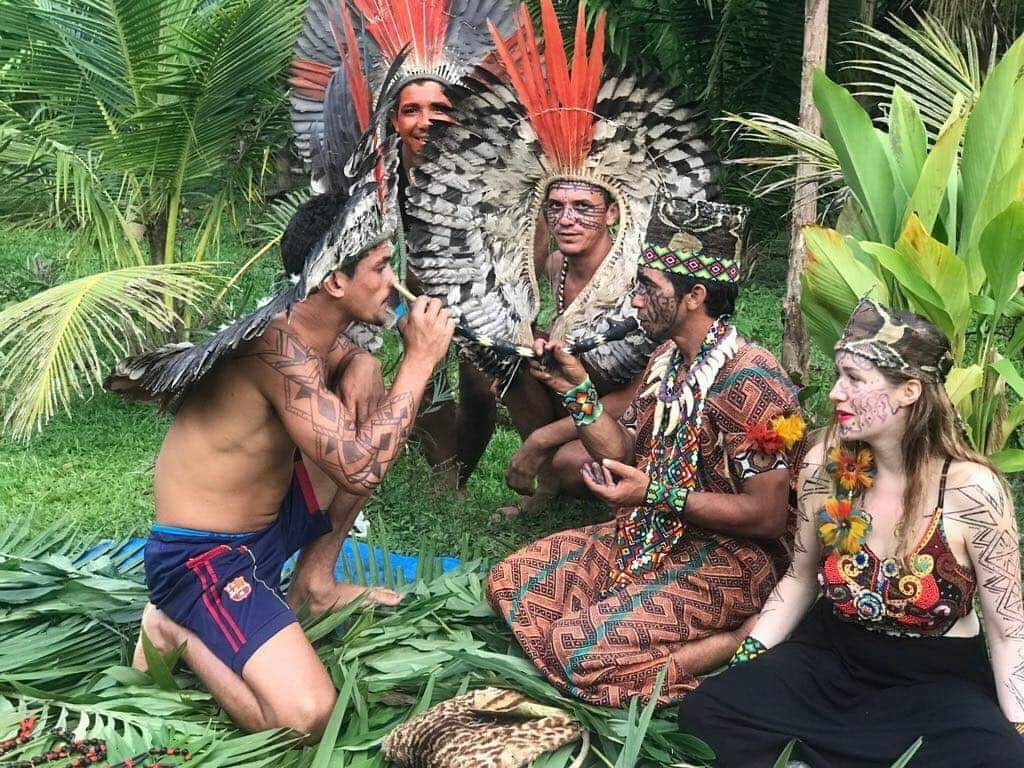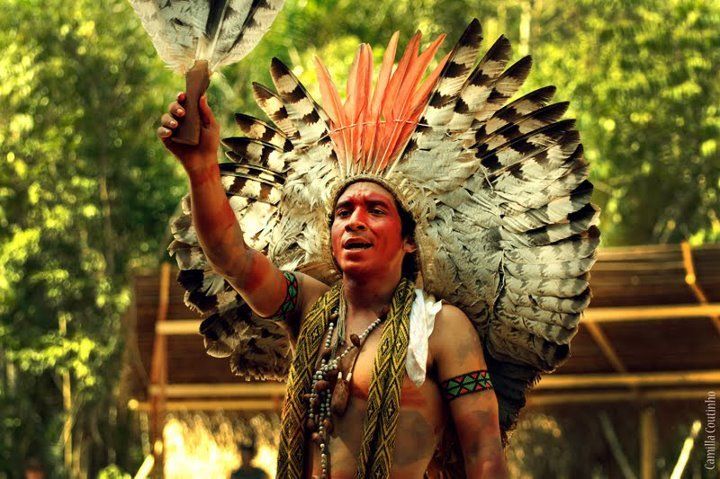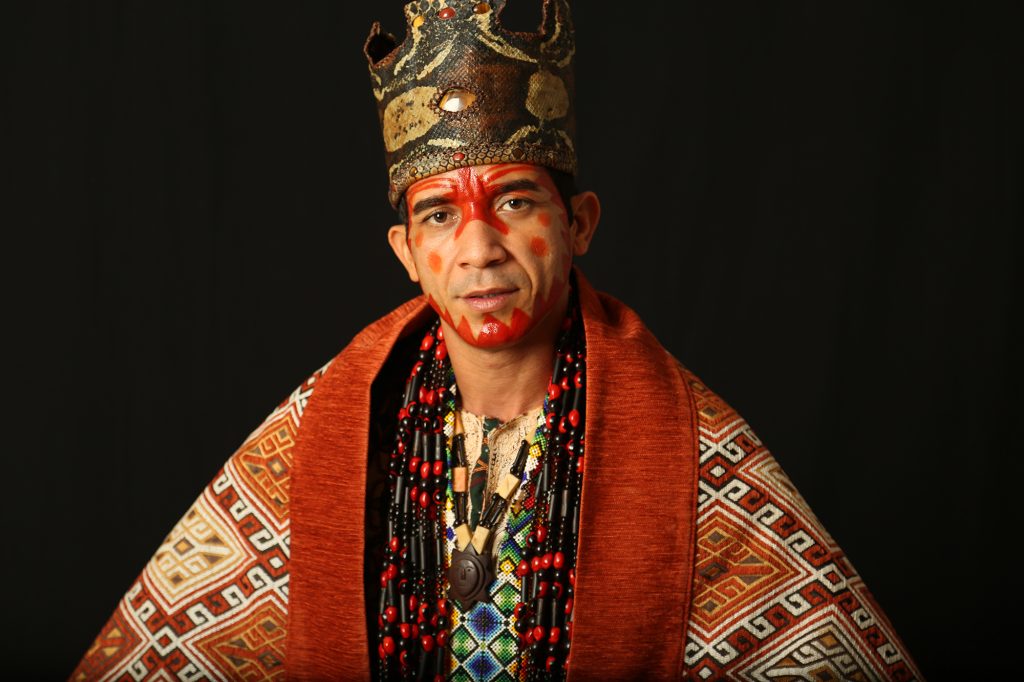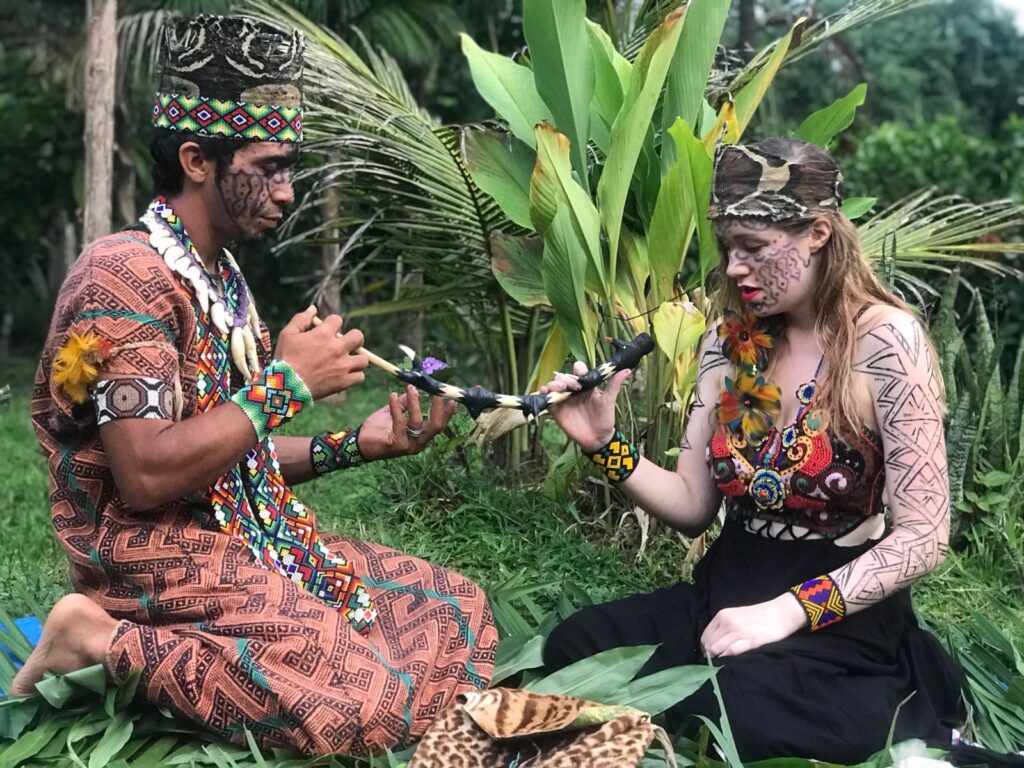Kuntanawa History
Throughout the Amazon, the arrival of the white man in search of rubber exploitation at the beginning of the 20th century meant the extermination of the local populations and later enslavement.
In this context of the rubber plantation society, which united groups that were recognized as distinct, the term “caboclo” emerged, which in the State of Acre is synonymous with Indian.
Although the term is commonly used, it can contain a pejorative meaning, associated with not working, dirt, and unreliability.


The founding myth of Kuntanawa history is found in Dona Mariana’s accounts of her mother Dona Regina’s capture in the forests of the Envira River at the beginning of the 20th century:
Dona Regina, Cabocla heroine of the Kuntanawa, subordinated herself without any choice to the rubber society, married several rubber workers, but never abandoned her indigenous heritage, which she bequeathed to her daughter Mariana. She became known as an excellent midwife and connoisseur of forest medicines.
Following in her mother’s footsteps, Mariana became one of the most renowned midwives on the Tagus River and also a connoisseur of healing herbs. In Jordão, both lived with the Huni Kuin who lived there, and Dona Regina met some ethnic relatives.
Mariana married Mr. Milton and her sons and daughters lived in the rubber society and worked as rubber workers for the bosses. They called her “cabocla Mariana”. At that time they were already living on the banks of the Tagus River, on a rubber plantation. Of their ten children, several were already married and they began to have grandchildren.
In the 1970s and 1980s, Milton’s children were known as “Milton’s caboclos.”
In the late 1980s, Milton and several of his children made a trip through the region. On these trips they had contact with renowned shamans and participated in several ayahuasca sessions. Afterwards, at least two of Milton’s children began to prepare ayahuasca and perform rituals with the drink.
With the consumption of this ancestral drink, which the late Doña Regina spoke of when recounting the culture of her people, the reference to indigenous ancestry became more present, and several stories speak of contacts, under the effects of the drink, with beings from the indigenous universe.


The Miltons began a struggle to reconstruct their identity as an indigenous Amazonian people. Osmildo, one of Milton’s sons and current leader of the struggle for indigenous recognition, in 1991, having just arrived on a registration trip and visit to Indigenous Lands, incorporated indigenous elements into his clothing, such as necklaces and headbands.
During ayahuasca sessions, he used to sing in the indigenous language of the Huni Kuin. Among Milton’s children, he was the one who most frequently invoked and publicly assumed indigenous ancestry.
Pedrinho, another of Milton’s sons, also began to prepare ayahuasca, after a remarkable experience under the influence of the drink in which it “authorized” him to prepare it.
Little by little, Milton and his children formed a family nucleus, mostly male, which periodically began to meet to drink ayahuasca, a custom that they still maintain.
Under the guidance of ayahuasca and with the support of shamans, Kuntanawa shamanism emerges. The young Kuntanawa, Milton’s grandsons, learn to listen to nature in open-air rituals with ayahuasca and the guidance of more experienced people.
They also compose songs that tell the Kuntanawa story, which become known throughout the village. They sing Icaros under the inspiration of the ritual drink, as well as the ayahuasca songs of their relatives Kaxinawa and Yawanawa.
